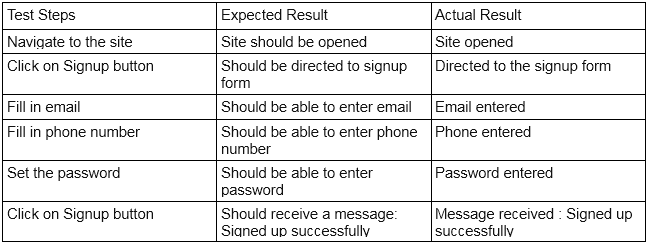Overview of How to Write Test Case?
Consider a scenario where you were asked to write test cases for testing an application. Would you be able to begin? You might have heard terms like test cases, test scripts, test plans, etc. These terms might sound confusing to you as they all sound very similar, but they are different in their meanings. It is very important to have a clear understanding of these software terminologies so that you can differentiate among them. In order to be well efficient in testing, you must begin with understanding what test cases are and how can you write them in a way such that it covers the given requirements.
Remember that a good tester is one who is detail-oriented. Besides having an eye for detail and specifications, a good tester should be able to write test cases effectively. Test case writing is not an easy task as it requires talent, experience, and good business understanding. One of the key skills required for writing quality test cases is decent writing skills. Good test cases are written with an objective to define the “what” and “how” of an application. Some testers might consider test case writing as a boring task, but the quality of test cases will determine the quality of your software, thereby determining the value and productivity and success of the team the company.
Writing a Test Case
We can define a test case as a set of input and output conditions or variables that will help a tester determines if the AUT(application under test) satisfies the requirements specified in the software requirement specification or the requirement document. It is basically a document that contains information such as the preconditions for testing, the test data used for testing, the test id, the test description, the postconditions for testing, and the steps to perform testing. It also contains details about the result observed, i.e., actual result and the result as per the requirement, i.e., expected result.
All these details are specified for a particular test scenario so as to test for conformity against the requirement document. Then, a test case is marked as pass and fail depending on the comparison between the actual result and the expected result. A pass test case has an actual result, just like the expected result mentioned in the requirement. On the other hand, a failed test case does not have an actual output matching the expected output, and hence it is tagged as failed.
A test case is a scenario that is single and executable. It is carried by a tester guided by the “steps to be followed” specified in the test case clearly. Thus, a test case can be considered a series of instructions provided in steps to verify and validate the software behavior as per the requirements.
Test case parameters are:
- Test Case Id
- Test Case Name
- Test Case Description
- Test Data
- Preconditions
- Test steps
- Expected Result
- Actual Result
- Postconditions
- Test Case Environment
Test cases do impact the testing phase, so it should be made sure they are written even before the testing phase actually starts. Test case writing is just as important and unavoidable as the process of testing.
Steps for Test Case
The steps to write a good test case are:
- A good test case has a test id along with a strong test name that ensures the clarity of the module being tested. Take an example where you are testing the signup page. In this case, use a title that contains “SignUp Page” in the title.
- A good test case has a well structured, strong, compact and clear description of the test to be performed. At times, this section might include preconditions, information of the test environment and other such factors.
- A good test case mentions the assumptions or any preconditions required to perform the given test properly. This might contain any requirement, such as any access permissions required to access the module being tested in the application.
- A test case mentioning the test data being used for testing is regarded as a good test case.
- The steps in the test cases should be concise, simple and clear. Also, make sure that the steps are not misleading so that there is no wastage of time while testing is done.
- The expected and actual results for every step should be clearly mentioned. These are very helpful for the tester as using this, a tester can clearly identify the step at which the application fails during the time of failure.
- Last but not least, make sure to make the test case is reusable
Sample Test Case for testing if the user is able to register into an application containing email, phone number, set password in the form.
- Test Case Name: Signup page authentication
- Description: A new user should be able to register successfully in the application.
- Precondition: The user should be a new user.
Tips and Tricks
While writing test cases, you should keep some points in mind like:
- Ensure that a test case provides a good test coverage, i.e., no key functionality is missed from testing
- Ensure the negative test cases or negative test scenarios are also documented and tested thoroughly.
Conclusion – How to Write Test Case?
Test cases are powerful and are beneficial to future employees, providing them with the truth about the system and its functionalities.
Recommended Articles
This has been a guide to How to Write Test Case? Here we have discuss the introduction, writing test cases, steps to write a good test case, parameters, and some tips and tricks. You can also go through our other suggested articles to learn more –


